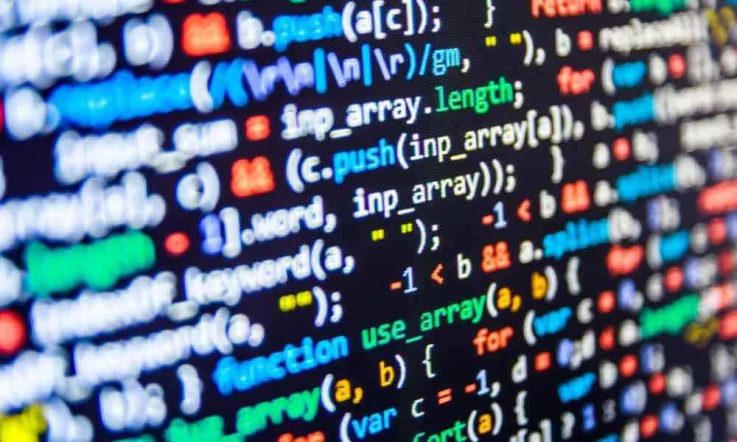By including programming in the curriculum, should the aim be to produce a nation of coders? Not so, according to Code Club Australia's Kelly Tagalan, who says the goal isn't to create 'big office buildings full of IT managers and developers'.
'What we're looking at is trying to teach children a specific way of thinking, a way of problem solving, not being afraid to fail, and being able to seek out their own solutions to the bugs that they find in their strings of code,' she tells Teacher.
'It's teaching them to think creatively and to create with language. And, when we teach children what's called “computational thinking” we're inviting them to explore a combination of Science, Technology, Mathematics and Humanities, and to be creative.
'So, really, whether a child ends up being a bus driver, or a mechanic, working as a chef or designer, or even a developer, the things that they learn as young computer programmers gives them a basic foundation for computational thinking - which makes them incredibly innovative thinkers.'
As Teacher recently reported, one Australian curriculum leader has highlighted the fact that at least 50 per cent of the new Digital Technologies curriculum focuses on developing thinking skills that support problem solving and technology use.
And in the UK, where coding was introduced into the primary curriculum in 2014, it's only a small part of a wider focus on computational thinking, problem solving and algorithms.
Tagalan is National Programme Manager of Code Club Australia, a non-profit organisation providing free, volunteer-led, after-school coding clubs for nine- to 11-year-olds and free teacher training. She says although the aim isn't to produce a nation of coders, those jobs will exist and the skills shortage is 'very much a real thing' that government and industry leaders are rightly concerned about.
Code Club Australia is part of the Code Club World network. 'What we've been doing for the last year-and-a-half, since we officially launched in Australia, is adopting the [worldwide] model ... where kids get to come and use the Code Club creative curriculum to teach them first Scratch, then HTML, then Python,' Tagalan explains.
'In Australia, we've adapted that into a full teacher training program, where we help teachers understand how to integrate the curriculum into their classrooms and other ways that educational communities - such as libraries and community centres - can use and partner with educators to create digital making spaces, or some version of a Code Club in their school or library.'
Last year, the organisation partnered with the Tasmanian Government to run a pilot program and teacher training in its state schools - there are now more than 50 code clubs in the state.
Tagalan says although the Code Club curriculum has been created for primary aged children, it can be used with children of any age. 'Kids who are disengaged and who don't have a high level of computer literacy, actually do very well with Code Club at secondary school age - it's just they move through the curriculum a lot quicker. And a lot of educators are starting at age eight, depending on the aptitude and the appetite [of the student].'
Schools and communities adapt the program in different ways. Some clubs are led by teachers, others by parent and community volunteers. Around 90 per cent of educators who attend the free teacher training report having very little or no previous experience of computer programming.
'Most of what we see is, they're looking for some sort of introduction and they're looking to gain confidence. What we do focus on a lot in the ... training is how we can expose them to these new and emerging technologies, but also help them to understand it is the facilitation of learning, not teaching rote memorisation.
'Much of the Code Club curriculum is designed to be self guided. So, once a class has been exposed to the basic principles and have the grasp, because of the visual nature of the curriculum, kids actually can move at their own pace; and, that's what we encourage teachers to do - adopt a slightly new teaching style during the hour of Code Club.'
This year the organisation, which is backed by the Telstra Foundation and receives funding from the Australian Federal Government, is developing a MOOC (Massive Open Online Course) for teachers across the country, so they don't have to attend in person. It also wants to explore how teachers can better measure learning in digital technologies and skills such as problem solving.
'What we do know is that we can measure very easily how much more confident a child is. While we can't really measure their quality as a computer programmer after two terms at Code Club using Scratch, we do see that they have a renewed appetite for their other subjects, because they're now no longer scared of problem solving.
'I think that's what we'll be focusing more on in 2016: What exactly can the teachers' measure? Do we see that performance is boosted in other subjects? ... What are the increments? What are the averages ... boys versus girls, regional versus metro? So, we'll be looking at that further.'
Tagalan says 2016 promises to be a big year for coding and her organisation, and educators have a vital role to play. 'Malcolm Turnbull set the tone with his innovation statement and especially with the Australian Federal Government backing us with funding, giving us that rocket fuel ... but it all starts with the teachers.'
What activities do you use to help students develop algorithmic thinking?
To help you learn more about the new Australian Curriculum Digital Technologies subject, ACARA has produced a short video overview. View the five-minute clip.



